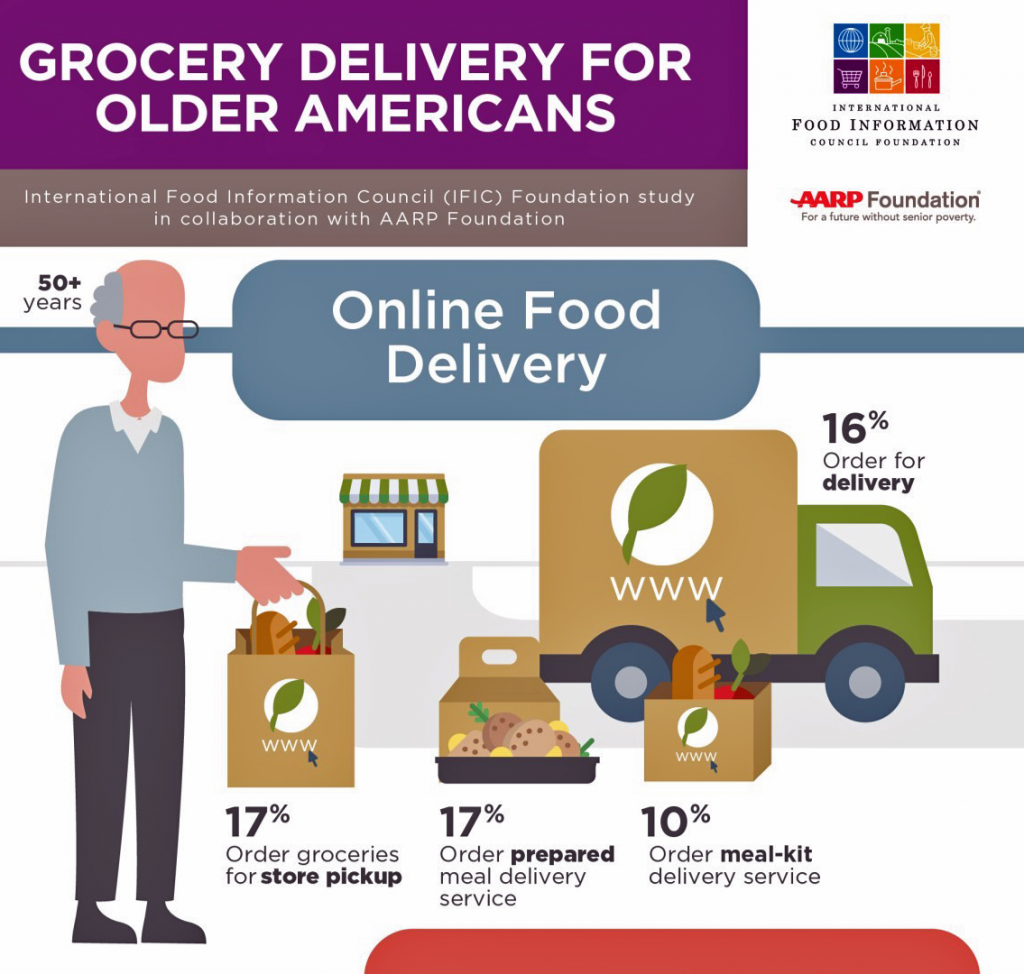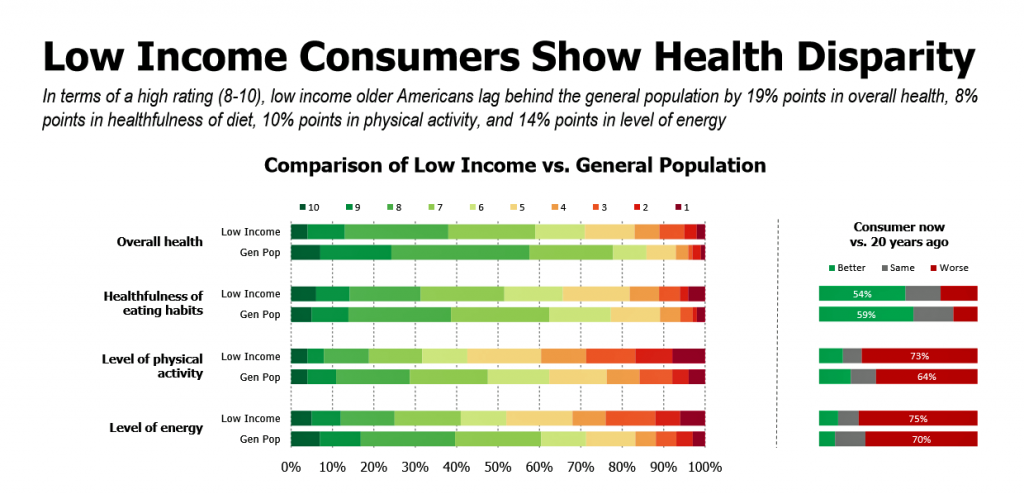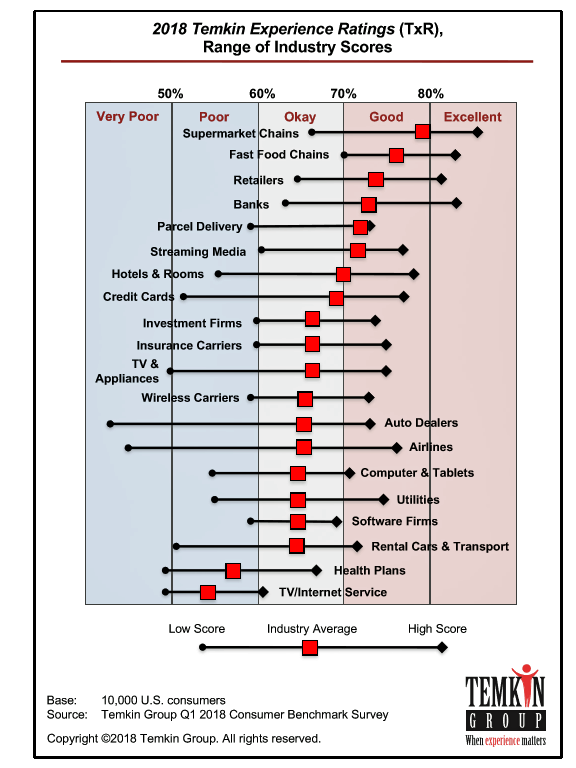 Only 17% of Americans over 50 years of age shopped for groceries online by mid-2018. But older people in the U.S. have underlying demands and needs that could nudge them to do online grocery shopping, unearthed in a survey from AARP Foundation and IFIC, the International Food Industry Council Foundation.
Only 17% of Americans over 50 years of age shopped for groceries online by mid-2018. But older people in the U.S. have underlying demands and needs that could nudge them to do online grocery shopping, unearthed in a survey from AARP Foundation and IFIC, the International Food Industry Council Foundation.
Typically, older Americans who shop online tend to be college-educated, work full-time, and earn higher incomes. Older people with mobility issues also shop more online than folks without such challenges. But even among those older people who shop online for food, they do so less frequently than younger people do.
- Among the motivations inspiring older people in America to grocery-shop online, most consumers cite:
- Not having to travel to the store, among 82%
- Placing an order when they have time, 78%
- Accessing a wide variety of products, 73%
- Taking time to shop, for 73%
- Avoiding the physical burden of carrying groceries, 72%.
Barriers older people cite preventing or slowing their adoption of food shopping online include high delivery or service fees, receiving items in poor condition, wanting to see/touch groceries in person, difficulty in returning a product, and receiving wrong or incomplete orders.
 Lower income Americans over 50 face even more challenges when shopping for food in general, a previous AARP/IFIC survey learned in April 2018.
Lower income Americans over 50 face even more challenges when shopping for food in general, a previous AARP/IFIC survey learned in April 2018.
The pearl to learn from in this study was that income status of Americans over 50 is directly associated with peoples’ perceptions of their own health. These consumers are less likely to rate their health as “excellent,” at a rate of 38% versus 57%, shown in the second bar chart.
Coupled with low health ratings is the fact that only 19% of low-income older adults rated their physical activity level as high, vs. 29% of all adults over 50.
Nonetheless, and encouragingly, low-income older Americans are keen to achieve health outcomes comparable to the rest of the pouplation. Beyond physical health, more lower-income older people cite emotional/mental health, energy, and muscle health/mobility than the overall older population.
The limiting factor for these folks in achieving better health outomes is their lack of undertanding of how their diet and nutrition translates into their own desired health outcomes.
One specific tactic some older people who shop for food online use to “translate” their food buying choices to their health goals is by reading nutrition labels. However, one-half of these older online shoppers say it’s hard to get nutrition facts online compared with gathering them at the store, in person.
IFIC and AARP conducted this online survey among 1,004 U.S. adults 50 years of age and older in June 2018.
 Health Populi’s Hot Points: Grocery stores ranked highest in the 2018 Temkin Experience Ratings. Look carefully at the chart here from Temkin’s latest consumer poll, and see where health plans lie in consumer experience: dead last with TV and internet service providers (THINK: Comcast, Verizon, et al).
Health Populi’s Hot Points: Grocery stores ranked highest in the 2018 Temkin Experience Ratings. Look carefully at the chart here from Temkin’s latest consumer poll, and see where health plans lie in consumer experience: dead last with TV and internet service providers (THINK: Comcast, Verizon, et al).
The grocery store’s opportunities for marketing health and engaging with health citizens is huge. Oliver Wyman taught me the concept of health care “front doors,” and when I consider the grocer, I think many “doors,” both offline and online. The grocery chain now has a pharmacy onsite, along with an electronic healthcare kiosk like higi which keeps a personal health record of my blood pressure and other metrics when I choose to use it and store my numbers in its data cloud. A grocery chain with a pharmacy has a pharmacist who is a primary care provider and advice-giver right there when I’m shopping. And the grocery store is a destination for food-as-medicine, which the older consumers in the AARP+IFIC study notes want to get better at using food purchase to achieve health goals like healthy hearts, greater energy, deeper sleep, and that Holiest of Grails, losing weight.
This IFIC/AARP survey coupled with the one published in April 2018 points out the differences between older Americans’ ability to gather information about nutrition online that ties with personal health goals. This is a design challenge that can be addressed by thoroughly understanding and empathizing with older people, their health goals, and their behavior with digital technology. One thing is clear: that older people across socioeconomic strata all look to food for health, and want tools to help them engage in health in this way. Watch for Amazon’s collaboration with Xealth to address this opportunity.
The post Most Americans Over 50 Not Buying Groceries Online….Yet appeared first on HealthPopuli.com.
Most Americans Over 50 Not Buying Groceries Online….Yet posted first on http://dentistfortworth.blogspot.com
No comments:
Post a Comment